If you would like to add more datasheets to the comparison table you can still find and add them around the site while browsing, querying or searching Device Specs. Meanwhile you will not lose the comparison table below. Furthermore unnecassary datasheets can be removed by clicking on the "Remove from comparison" buttons (ever more than one item during one page load) but in this case reloading the table will be needed. Then click again on the appropriate header "Compare" button.
|
|
| | | | | |
|
Use the following link to refer to this comparison |
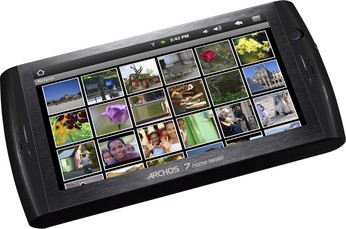
| 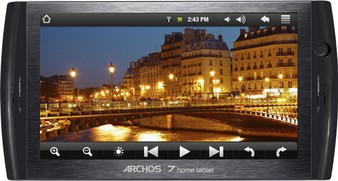
| 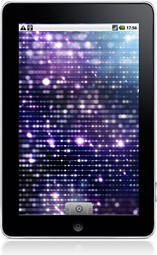
| 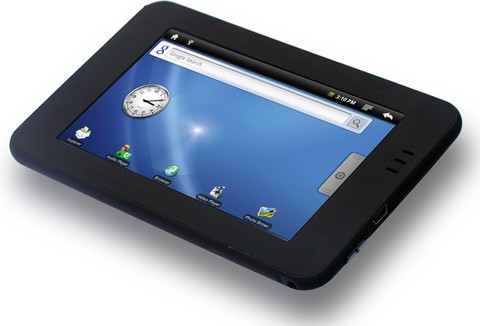
| 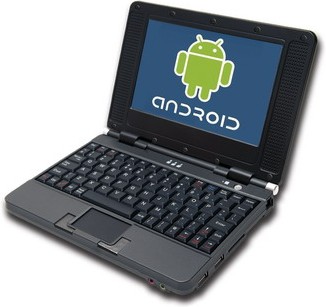
| 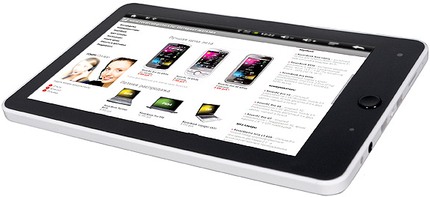
|
|
Remove all |
|  Add to compare Add to compare | |  Add to compare Add to compare | |  Add to compare Add to compare | |  Add to compare Add to compare | |  Add to compare Add to compare | |  Add to compare Add to compare |
 Introduction Introduction |
Released |
2010 Jun |
2010 Jun |
2010 Jun 4 |
2010 Apr |
2010 Feb |
2010 Sep |
Hardware Designer |
Archos |
Archos |
Ziss HongKong |
Hongfutai E-Tech |
Hivision |
Toshiba |
Manufacturer |
Archos |
Archos |
Ziss HongKong |
Hongfutai E-Tech |
Hivision |
Toshiba |
General Extras |
Kickstand |
Kickstand |
No |
No |
No |
No |
Device Category |
Tablet |
Tablet |
Tablet |
PDA |
Subnotebook |
Tablet |
 Physical Attributes Physical Attributes |
Width |
203 mm |
203 mm |
118.5 mm |
139 mm |
|
190 mm |
Height |
107 mm |
107 mm |
190.5 mm |
88 mm |
|
120 mm |
Depth |
12 mm |
12 mm |
13 mm |
12 mm |
|
12 mm |
| Dimensions
| 7.99x4.21x0.47 inches |
7.99x4.21x0.47 inches |
4.67x7.50x0.51 inches |
5.47x3.46x0.47 inches |
|
7.48x4.72x0.47 inches |
Mass |
388 g |
388 g |
332 g |
300 g |
650 g |
360 g |
|
13.69 ounces |
13.69 ounces |
11.71 ounces |
10.58 ounces |
22.93 ounces |
12.7 ounces |
 Software Environment Software Environment |
Platform |
Android |
Android |
Android |
Android |
Android |
Android |
Operating System |
Google Android 1.5 (Cupcake) |
Google Android 1.5 (Cupcake) |
Google Android 1.5 (Cupcake) |
Google Android 1.5 (Cupcake) |
Google Android 1.5 (Cupcake) |
Google Android 1.5 (Cupcake) |
Software Extras |
No |
No |
Navigation software |
Navigation software |
No |
No |
 Application processor, Chipset Application processor, Chipset |
CPU Clock |
600 MHz |
600 MHz |
600 MHz |
600 MHz |
600 MHz |
600 MHz |
CPU |
Rockchip RK2808, 2009, 32 bit, single-core |
Rockchip RK2808, 2009, 32 bit, single-core |
Rockchip RK2808, 2009, 32 bit, single-core |
Rockchip RK2808, 2009, 32 bit, single-core |
Rockchip RK2808, 2009, 32 bit, single-core |
Rockchip RK2808, 2009, 32 bit, single-core |
 Operative Memory Operative Memory |
RAM Type |
SDRAM |
SDRAM |
LPDDR SDRAM |
SDRAM |
SDRAM |
DDR SDRAM |
RAM Capacity (converted) |
128 MiB RAM |
128 MiB RAM |
128 MiB RAM |
128 MiB RAM |
128 MiB RAM |
128 MiB RAM |
 Non-volatile Memory Non-volatile Memory |
Non-volatile Memory Interface |
Yes |
Yes |
Yes |
Yes |
Yes |
Yes |
Non-volatile Memory Capacity (converted) |
8 GB ROM |
2 GB ROM |
1024 MiB ROM |
16 GB ROM |
2 GB ROM |
4 GB ROM |
 Display Display |
Display Diagonal |
178 mm |
178 mm |
178 mm |
127 mm |
178 mm |
178 mm |
|
7 inch |
7 inch |
7 inch |
5 inch |
7 inch |
7 inch |
Resolution |
480x800 |
480x800 |
480x800 |
800x480 |
800x480 |
800x480 |
Horizontal Full Bezel Width |
111.42 mm |
111.42 mm |
26.92 mm |
30.1 mm |
|
37.37 mm |
Display Area Utilization |
64.4% |
64.4% |
61.9% |
58.2% |
|
61.3% |
Pixel Density |
133 PPI |
133 PPI |
133 PPI |
187 PPI |
133 PPI |
133 PPI |
Display Type |
Color TN-TFT LCD display |
Color TN-TFT LCD display |
Color TN-TFT LCD display |
Color TN-TFT LCD display |
Color TN-TFT LCD display |
Color TN-TFT LCD display |
Number of Display Scales |
16.8M |
16.8M |
65536 |
16.8M |
|
|
 Graphical Subsystem Graphical Subsystem |
 Audio/Video Interfaces Audio/Video Interfaces |
A/V Out |
No |
No |
No |
HDMI 1.3 |
No |
No |
|
No |
No |
No |
HDMI C Mini |
No |
No |
 Audio Subsystem Audio Subsystem |
Microphone(s) |
mono |
mono |
mono |
mono |
mono |
mono |
| Loudspeaker(s) |
stereo |
stereo |
mono |
mono |
stereo |
mono |
| Audio Output |
3.5mm |
3.5mm |
Yes |
3.5mm |
3.5mm |
3.5mm |
 Cellular Phone Cellular Phone |
Complementary Phone Services |
No |
No |
Vibrate |
No |
No |
No |
 Secondary Cellular Phone Secondary Cellular Phone |
 Control Peripherals Control Peripherals |
Touchscreen Type |
Resistive screen |
Resistive screen |
Resistive screen |
Resistive screen |
No |
Resistive screen |
Touch Surface Type |
No |
No |
No |
No |
Resistive surface |
No |
Keyboard |
No |
No |
No |
No |
Built-in QWERTY |
No |
| Number of keys
| |
|
|
|
80 |
|
Directional Pad |
No |
No |
No |
No |
4-way |
No |
 Communication Interfaces Communication Interfaces |
Expansion Interfaces |
TransFlash,
microSD,
microSDHC |
TransFlash,
microSD,
microSDHC |
TransFlash,
microSD,
microSDHC |
TransFlash,
microSD,
microSDHC |
MMC,
SD,
SDHC |
TransFlash,
microSD,
microSDHC |
USB |
USB 2.0 |
USB 2.0 |
USB 2.0 |
USB 2.0 |
USB 1.1 |
USB 2.0 |
|
USB HS (480 Mbps) |
USB HS (480 Mbps) |
USB HS (480 Mbps) |
USB HS (480 Mbps) |
USB FS (12 Mbps) |
USB FS (12 Mbps) |
| USB Services
| USB charging,
USB Host,
USB PD |
USB charging,
USB Host,
USB PD |
USB charging,
USB Host,
USB PD |
USB charging,
USB Host,
USB OTG 1.2,
USB PD |
USB Host,
USB PD |
USB charging,
USB Host,
USB OTG 1.3,
USB PD |
| USB Connector
| USB Micro-B (Micro-USB) |
USB Micro-B (Micro-USB) |
USB Mini-B (mini-USB) |
USB Mini-B (mini-USB) |
USB A |
USB Mini-B (mini-USB) |
Bluetooth |
No |
No |
No |
Yes |
No |
Yes |
Wireless LAN |
802.11b,
802.11g |
802.11b,
802.11g |
No |
802.11b,
802.11g |
802.11b,
802.11g |
802.11b,
802.11g |
LAN |
No |
No |
No |
No |
100 BASE-T (100Mbit/s) |
No |
 Multimedia Broadcast Multimedia Broadcast |
FM Radio Receiver |
No |
No |
No |
FM radio (88-108 MHz) with RDS |
No |
No |
| FM Radio Transmitter |
No |
No |
No |
Yes |
No |
No |
 Satellite Navigation Satellite Navigation |
 Primary Camera System Primary Camera System |
Camera Placement |
No |
No |
Rear |
No |
No |
No |
Camera Image Sensor |
No |
No |
CMOS |
No |
No |
No |
Number of effective pixels |
|
|
1.3 MP camera |
|
|
|
Zoom |
|
|
1.0 x optical zoom |
|
|
|
Focus |
No |
No |
CD AF |
No |
No |
No |
Camera Extra Functions |
No |
No |
Macro mode |
No |
No |
No |
 Secondary Camera System Secondary Camera System |
 Built-in Sensors Built-in Sensors |
Built-in accelerometer |
No |
No |
Yes |
No |
No |
Yes |
 Ingress Protection Ingress Protection |
Protection from solid materials |
Yes |
Yes |
Yes |
Yes |
Yes |
Yes |
Protection from liquids |
Yes |
Yes |
Yes |
Yes |
Yes |
Yes |
 Power Supply Power Supply |
Battery |
Li-ion polymer (LiPo) |
Li-ion polymer (LiPo) |
Li-ion |
Li-ion polymer (LiPo) |
Li-ion |
Li-ion |
|
built-in |
built-in |
removable |
built-in |
Yes |
removable |
|
|
|
|
1-cell |
1-cell |
1-cell |
Estimated Battery Life |
7.0 hours |
7.0 hours |
|
|
4.0 hours |
|
 Geographical Attributes Geographical Attributes |
Market Countries |
Argentina,
Belgium,
Brazil,
France,
Germany,
Italy,
Spain |
Argentina,
Belgium,
Brazil,
France,
Germany,
Italy,
Spain |
HK |
China |
No |
No |
Market Regions |
Europe,
South America |
Europe,
South America |
Southeast Asia |
No |
No |
No |
Mobile Operator |
|
|
|
|
|
|
 Datasheet Attributes Datasheet Attributes |
Data Integrity |
Preliminary |
Preliminary |
Preliminary |
Preliminary |
Preliminary |
Final |
Added |
2010-06-27 16:44 |
2010-06-27 16:49 |
2010-07-08 22:39 |
2010-07-12 16:27 |
2010-07-19 11:57 |
2011-06-09 16:24 |





